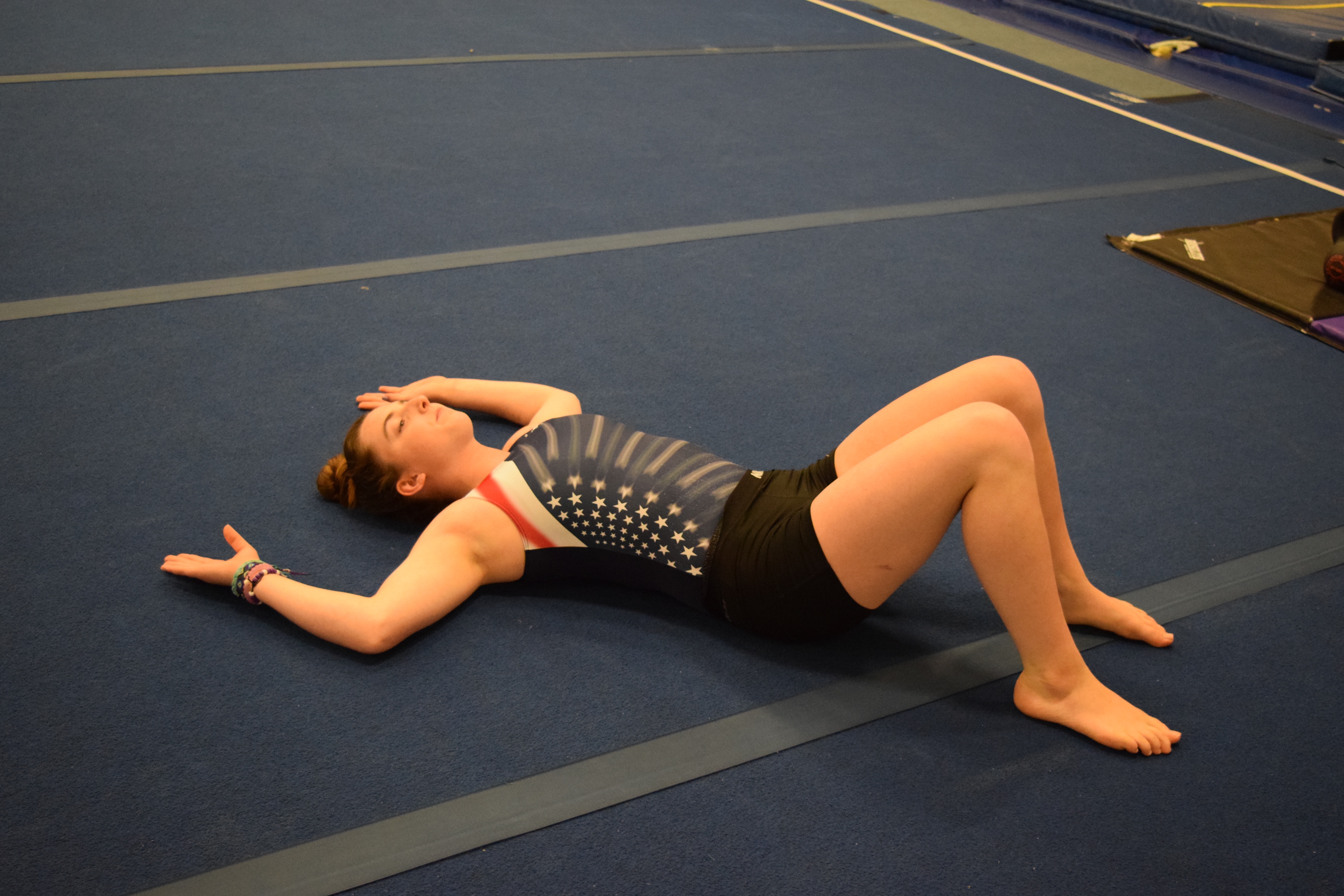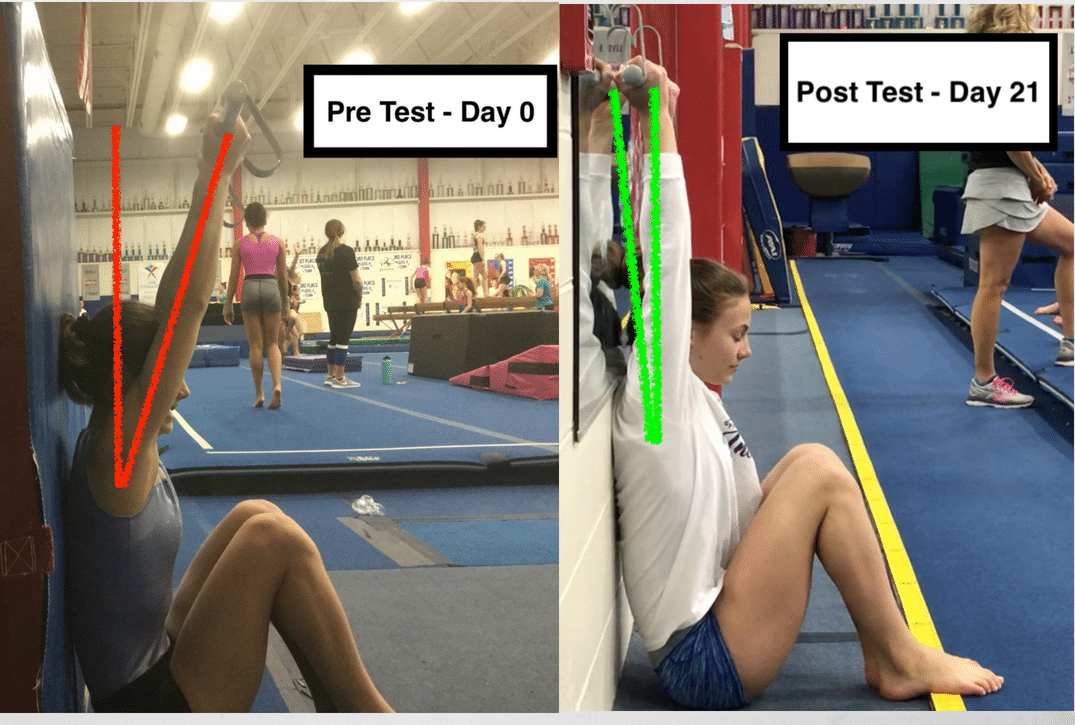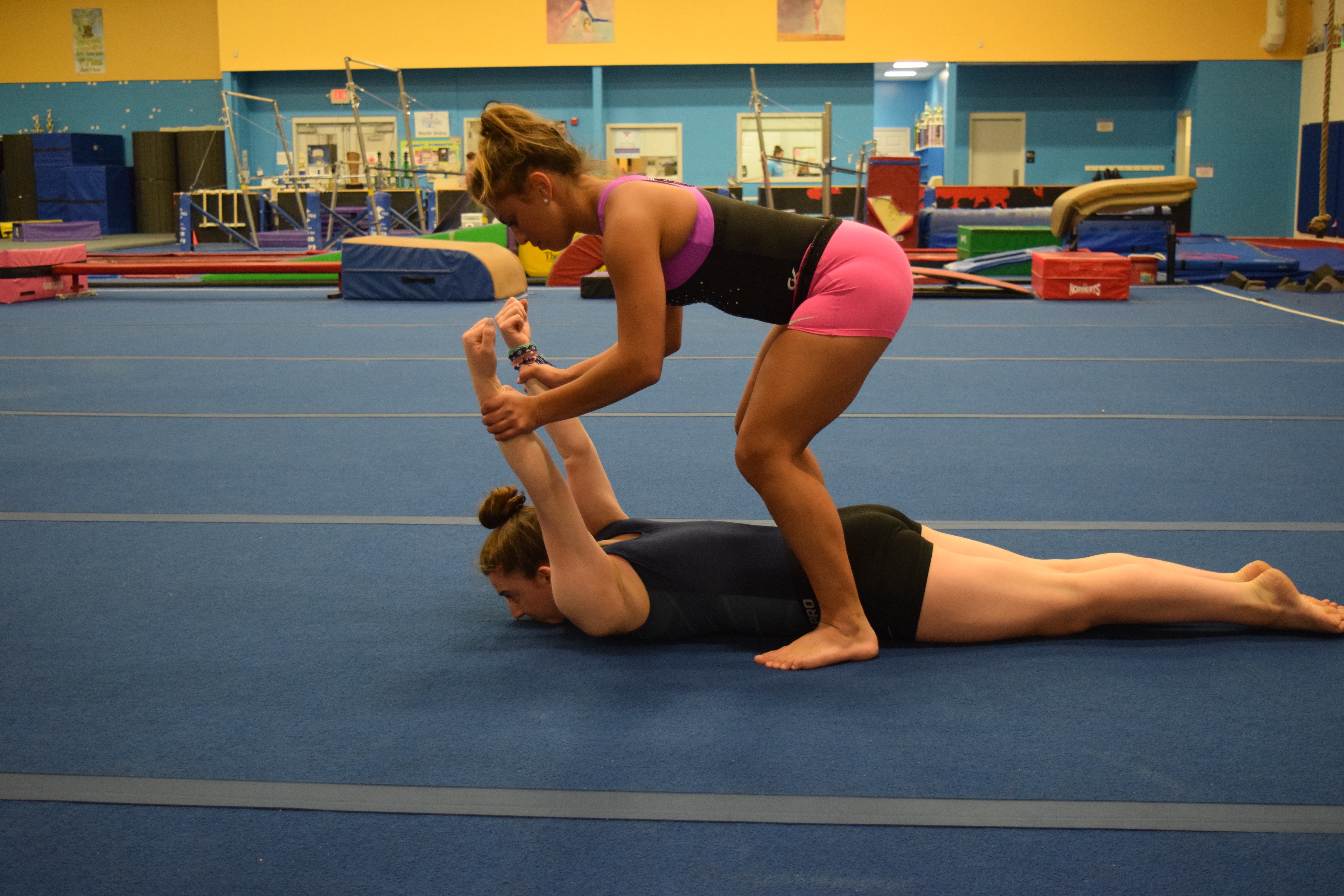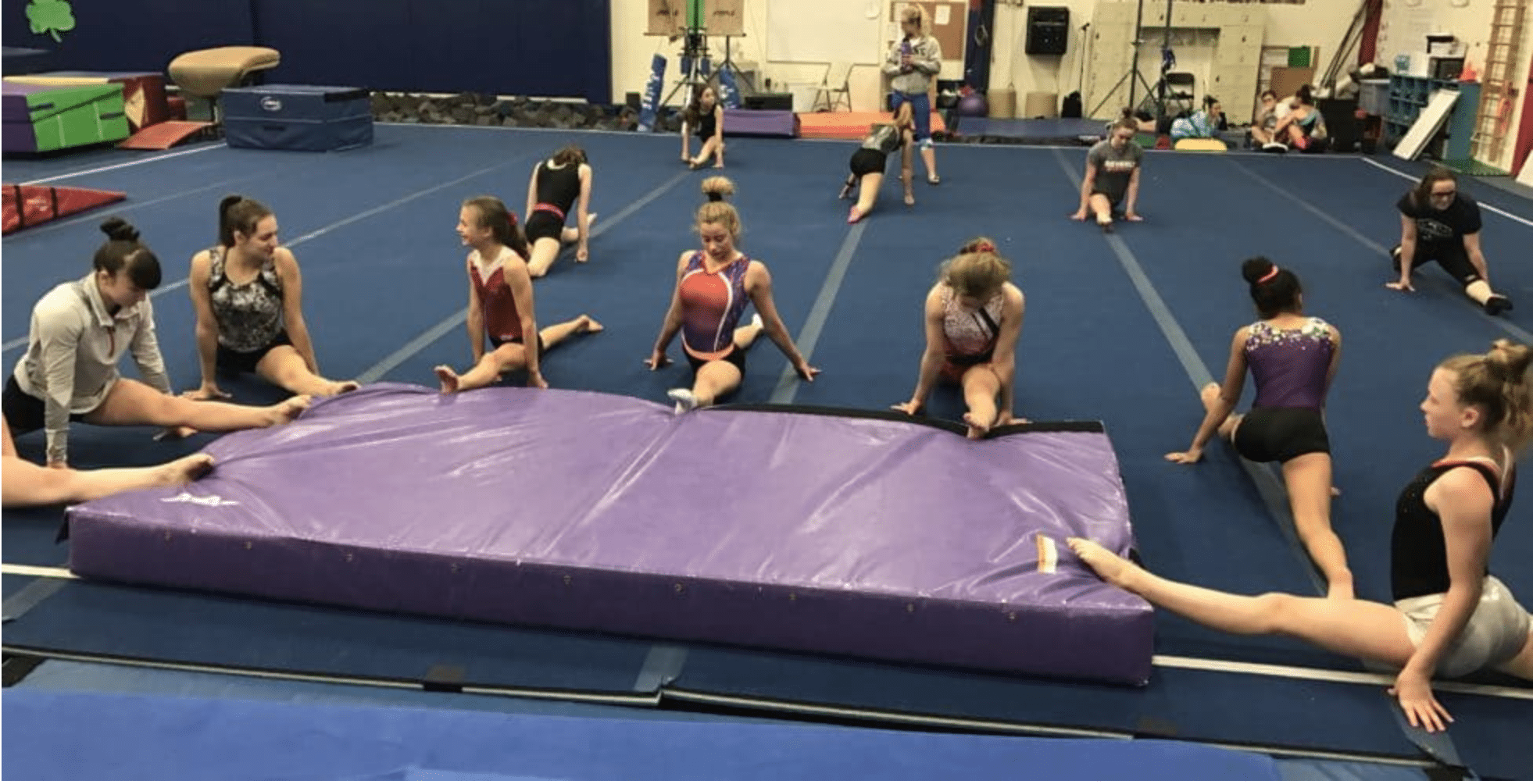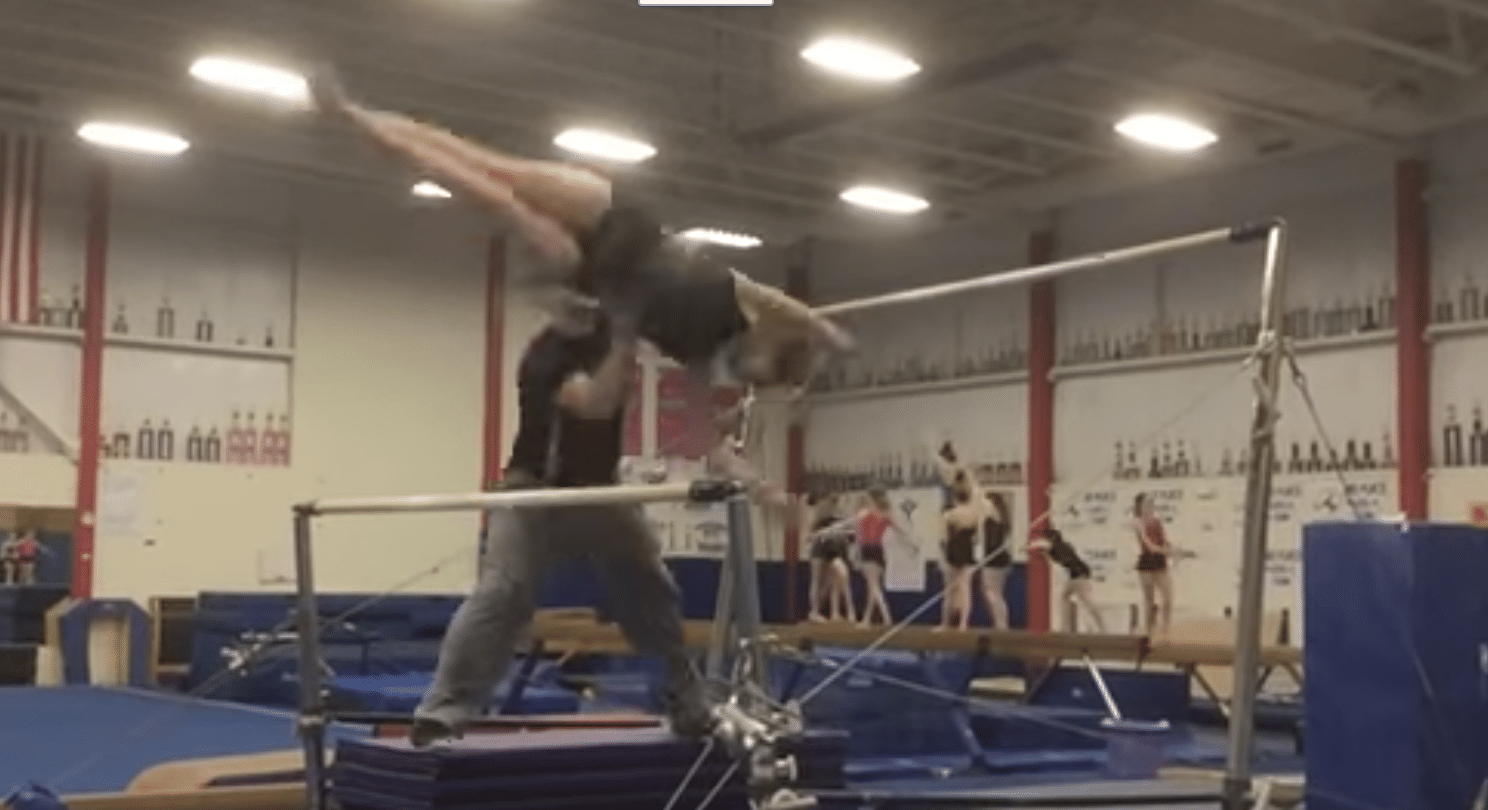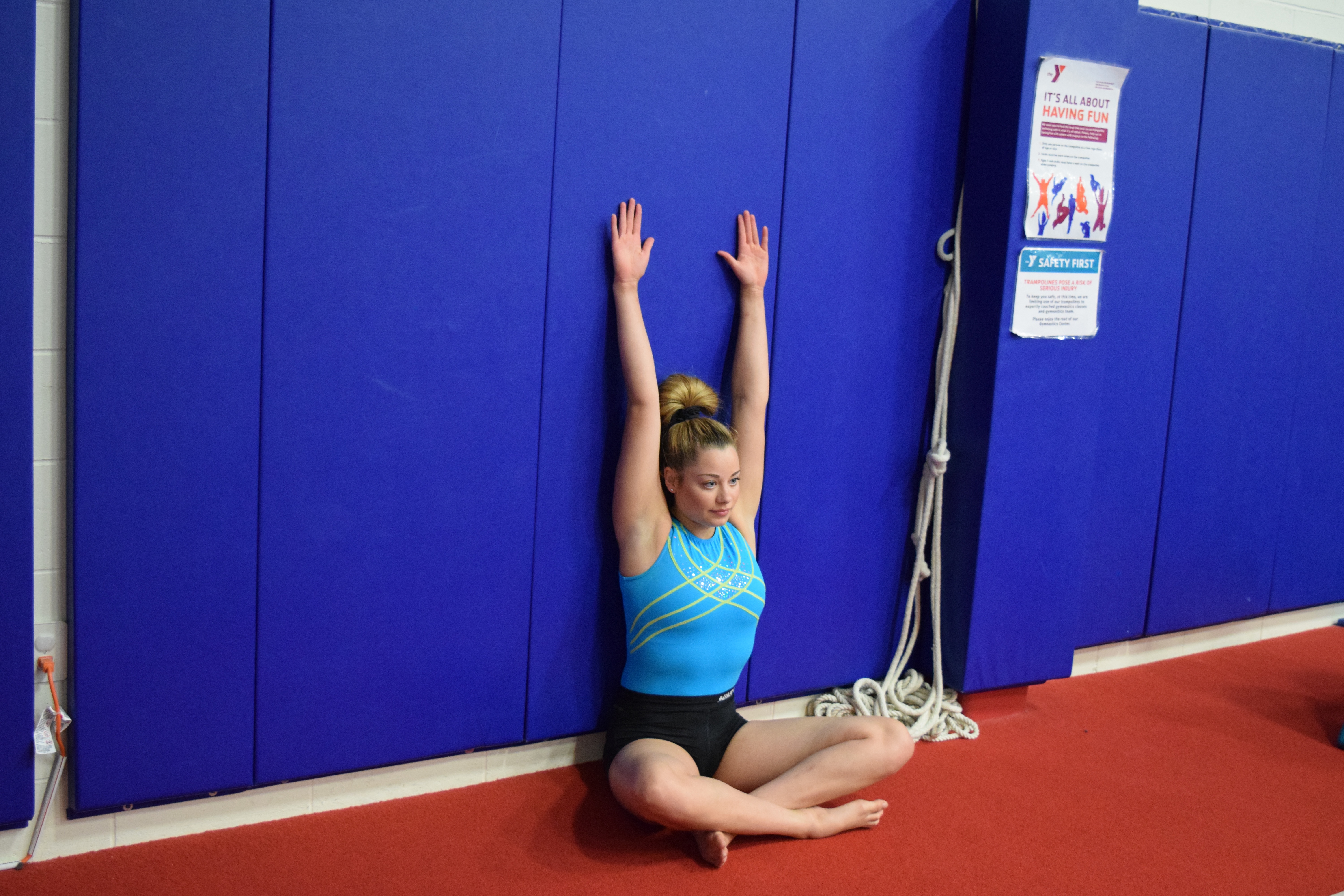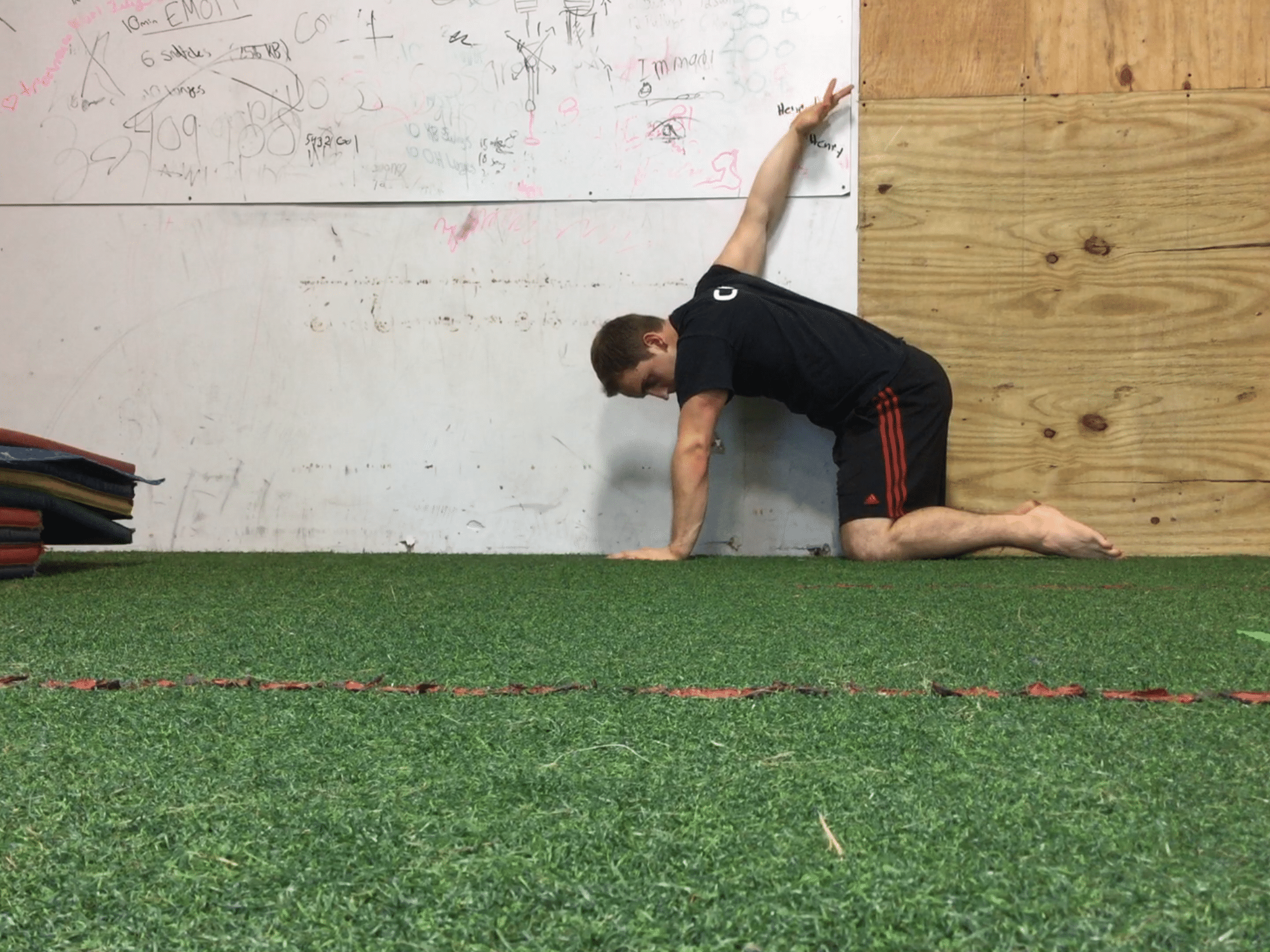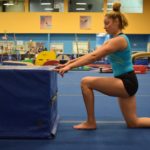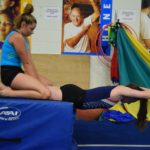Quick Overhead/Posture Pre-Hab for Gymnasts – Wall Angel Progressions
One of the common trends I see in a lot of gymnasts I work with are issues in their middle spine (thoracic spine) and shoulder blade. Many times the gymnast gets “wide back” and rounded forward chest, with the shoulder joints sitting forward/rotated in, and commonly the shoulder blade pops up or “wings” off of their back. There are multiple reasons it can happen such using the constant “hollow” position for skills, tightness or increased tone in the chest and certain shoulder muscles, imbalances in the upper chest and shoulders, poor breathing patterns, an acquired compensation for lower back issues, faulty technique during skills, and more. I’m in the process of writing a little bit more in depth post related to shoulders and shoulder blades as we speak. However, I wanted to offer a really easy drill/progression that we use almost every day with our gymnasts to help combat this issues.
Also, if you want to get all of the best shoulder flexibility drills I give to gymnasts, you can download my “10 Minute Gymnastics Flexibility Circuits” for free here,
Download My New Free
10 Minute Gymnastics Flexibility Circuits
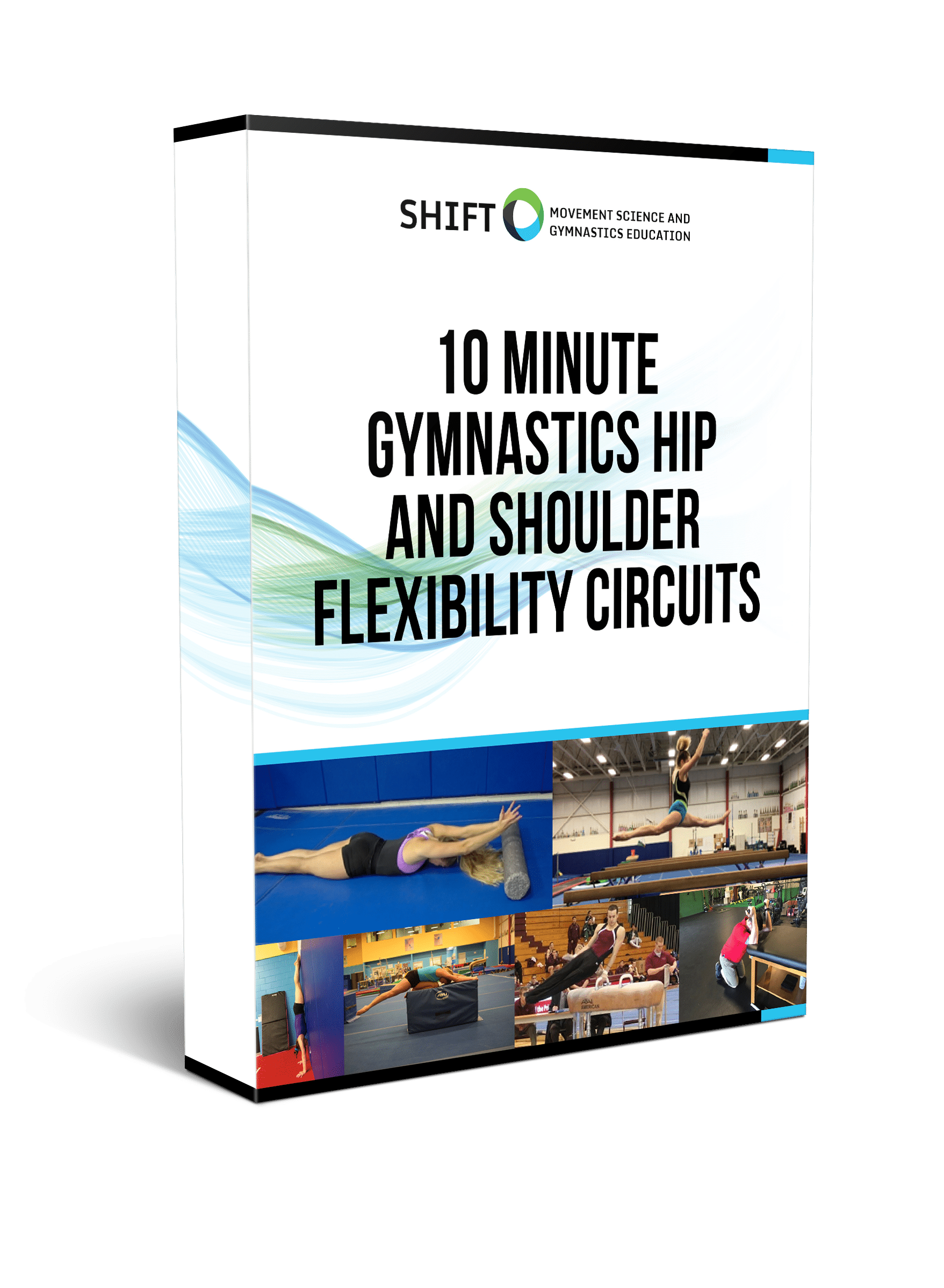
- 4 full hip and shoulder circuits in PDF
- Front splits, straddle splits, handstands and pommel horse/parallel bar flexibility
- Downloadable checklists to use at practice
- Exercise videos for every drill included
The “angel” drill series is something that can not only be a really good screening test for your gymnasts, but also a fantastic pre-hab/postural/overhead mechanics drill. These drills are really good because they help to reverse the issues noted above promoting the chest to open up into extension, lengthening some of the tight muscles/fascial areas in the front of the chest or in the shoulder, promoting the shoulder blades to flatten against the rib cage and not wing, and also to focusing on using the right areas for movement rather than compensation in the lower back.
These drills also really help to point our if someone has issues in any of these that they may be cheating in other areas for during gymnastics skills so I tend to use it also as a screening test. Remember, spreading load out between multiple joints and muscles is always better than missing range of motion somewhere and overloading certain area. Many times, full controlled overhead motion is part of the equation.
*** Important Note – If a gymnast reports sudden shoulder pain with any these drills they should stop and not “work through it”
There are many, many things that can contribute to shoulder pain in a gymnast and if this is the case they need to be evaluated to figure it out. With that being said, I wanted to walk people through basic drill and a few progressions that can really help out.. You’ll be able to see 3 of our girls doing them in each video, some better than others (which is why I chose them for an example). The gymnast in the pink/black leo is very mobile and performs these well, although she does have a tendency to use her lower back extending to cheat a bit.
1) Floor Angel Lying on Back – This is the most basic version of the angel series with the gymnast on their back. The gymnast will bed their knees up, which helps to rotate the pelvis back out of the arch position many gymnasts have. I cue the gymnast to work on pressing their lower back against the floor, but nothing into a crazy hollow/flex as the lower back has a slight natural arch. Have the gymnast keep their core muscles braced while using good diaphramatic/belly breathing, then have them reach their arms up to 90 degrees kind of in the “stick em up” position. Keep the chin tucked down into the floor like to nod or make a double chin, which helps align the upper spine. The gymnast will try to keep their shoulders, elbows, and wrists/hands in contact with the floor and they will slide their arms overhead and back down slowly. The gymnast should tune into feeling the shoulder blades move up and around the rib cage. You’ll be able to see the gymnast in the middle who has a tough time with this and ( I asked her to exaggerate the arms coming off the floor)
2) Seated Wall Angel Against Wall – Once the gymnast can show good control of the floor angel with no compensations, then can transition it to an upright position. The gymnast will sit cross legged with their butt flat against the wall. Be sure to tell them to keep the ribs tucked down and brace their core while taking good controlled breaths (holding the breath is compensation). They will then do the slight chin down nod against the wall and keep the head in a good alignment (no upper neck arch). Then they can assume the same “stick em up” pose and work to slide their arms overhead up the wall maintaining contact with shoulders, elbows, wrists. You might be amazed how challenging this is for your athletes to do correctly.
3) Standing Wall Angel – After the sitting wall angel, the gymnast can then progress to a standing position which requires more overall demand and good core control to not allow the lower back to extend. The process is very much the same as the first two. It also starts to integrate whole body control as a gymnast would need for a good handstand or overhead skill work. Again, you might be surprised with how tough it is to do correctly.
4) Floor Angel Lying on Stomach – In order to add a bit of gravity to the equation and make things harder, the gymnast can repeat the drill laying down flat on their stomach. Although this is a bit tougher because they will not have the wall as good sensory feedback, hopefully by reaching this progression they know how to access the correct movements. The gymnast will lay face down with the chin tucked and forehead down, and be sure to again brace their core and keep the ribs in. The gymnast will do the same “stick em up” position (looks like a “W” exercise as well), then slowly reach overhead and back down in a controlled fashion.
5) Light Weighted Wall Angels – This is naturally the next progression once perfect technique and control has been demonstrated without and compensation. The gymnast can sit back down or stand at the wall and use light weights to make things a bit more challenging. Unfortunately I was not able to get a video, but its exactly the same as the drills about just holding a light weight in each hand. Believe me, a little goes a long way with these in terms of how much weight to use when its being done correctly.
Just to be aware, a few common errors and compensations for all of these include
- Lower back arching when having missing overhead mobility/control
- The head and chin jutting forward or arching the neck
- The gymnast holding their breath, or taking deep breaths with their upper chest moving rather than their belly (apical upper chest compensatory breathing versus diaphragmatic breathing)
- The gymnast maximally contracting all their back muscles. The motion should be smooth and controlled, as the shoulder blade tends to do it’s job better in a neutral position
- The gymnast going really fast to make up for poor control, 2 – 3 second count up and down is good
Toss a quick set or two of 5 into your warm ups, pre-hab circuits, or bar workouts and you’ll they can be great. I would even encourage readers to find a wall next to them and give it a shot to feel it for themselves. Like I said we do them almost daily along with some other great postural reversal drills. Best of luck,
Dave
References
- Falsone, S. The Thoracic Spine, Audio Podcast – www.movementlectures.com
- Andrews, J., Reinold, M., Wilk, K. The Athlete’s Shoulder. Second Edition, 2009
- Paine, R., Voight, M. The Role of The Scapula. IJSPT: 8(5): 617 – 629; 2013
- Sahrmann, S. Diagnosis and Treatment of Movement Impairment Syndromes
- Manske R., et al. Current Concepts In Shoulder Examination of The Overhead Athlete. IJSPT Oct 2013; 8(5): 554 – 578

